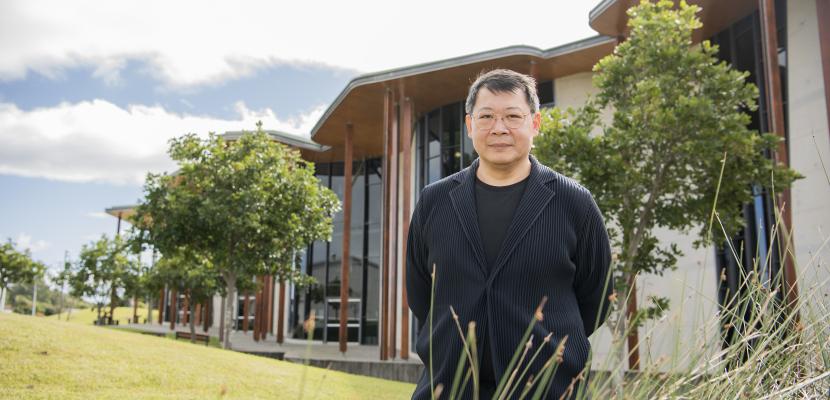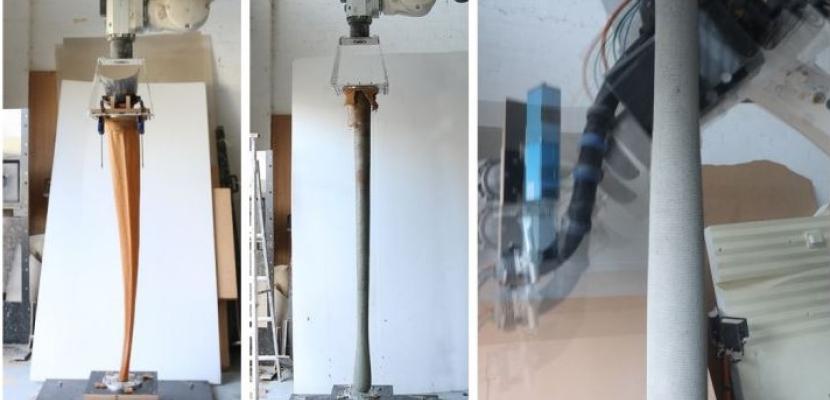
Researchers are experimenting with knitted wool as an eco-friendly alternative to traditional metal, timber and fibreglass formwork used to build concrete columns.
The new construction technique could be a waste-reducing alternative in an industry that contributes 11 percent of the world’s carbon emissions.
Regular formwork is typically discarded as construction waste after a single use but the wool formwork can be reused up to three times and is biodegradable.
Head of the Abedian School of Architecture at Bond University, Professor Paul Loh, teamed up with fellow architect David Leggett of LLDS architects and textile design expert Dr Jenny Underwood of RMIT University to produce and test the wool forms.
Using Australian wool which is less than 1 percent of the weight of traditional formwork, an advanced knitting machine produced sock-like seamless forms which were then suspended by an industrial robotic arm as concrete was poured in.
The largest of the test columns was 1.8m high by 17.5cm wide.

Professor Loh said fabric formwork had been used since the 19th century but was limited by the unpredictable shapes produced during casting.
“Typically woven fabric is used which is also restrictive in its shape and requires tailoring skills,” he said.
“The use of 3D-knitted fabric has never been explored to its full capacity in this application, and the research sets out to explore the feasibility of casting using bio-material such as wool and testing the repeatability of the cast using a single mould.”
Professor Loh said the columns would need to be scaled up to twice the height and width to be of use in the construction industry, and be uniform in shape.
“While the fabric naturally produces a different and almost novel aesthetic in the cast, the research aims to find the correlation between the knit architecture and the resulting cast geometry,” he said.
“Our research has so far only produced a feasibility study, and our next step is to delve deeper into the computational code behind the 3D-knit fabric to align it with the shape and structural performance.”
The wool forms are washed in cold water between uses and another advantage is the potential to use recycled wool from garments that may otherwise go to landfill.
Professor Loh said the construction industry contributed an estimated third of the world’s waste, most of which goes to landfill.
“More so than ever, we need to re-examine our construction practices against the three principles of circular design: eliminate construction waste, circulate products for long-term use and regenerate natural systems by using biodegradable material,” he said.
The research is an extension of Professor Loh’s work exploring variable shaped formwork since 2016.
His findings helped spawn a new company, Curvecrete, which uses robotic forming technology to mould low-carbon concrete into curved shapes.
The latest research was funded by the University of Melbourne.